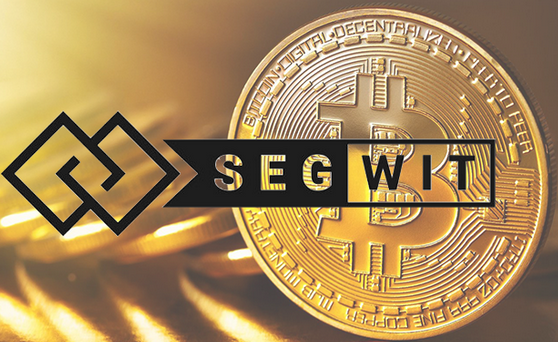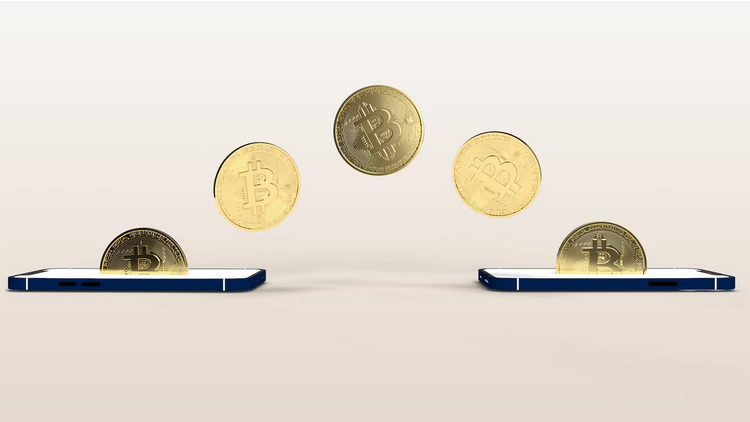What Is Bitcoin SegWit and How Does It Function?

Bitcoin scalability is a persistent problem for the world’s most popular cryptocurrency, which Bitcoin developers have battled to resolve. The SegWit soft fork was one solution introduced, which changed the number of Bitcoin transactions that could be handled concurrently.
While increasing the number of transactions per Bitcoin block is a sure thing, SegWit had its issues.
How Do Bitcoin Transactions Work?
Bitcoin transactions follow the UTXO (Unspent Transaction Output) Model, which states that each transaction spends the prior transaction’s output on the blockchain and generates a new output that can be paid in the next transaction.
You do not own a Bitcoin token by design. Instead, you possess the unspent output of a predetermined number of previous transactions. You can demonstrate ownership of this output by providing the necessary address, digital key, and digital signature.
Assume you wish to give Bitcoin to a close friend. You will first sign a message including the input, output, and amount with a private key. Then, the transaction is broadcast to the whole Bitcoin network and is visible to all users.
When a node receives a transaction, it examines it to see if:
- Your private key matches the public key you claim to own
- The sum of inputs is greater than the sum of its outputs
- The output is unspent.
If the transaction meets these three criteria, it is confirmed and forwarded to other nodes for verification. This procedure entails solving complex mathematical puzzles, which miners with the highest crypto hash rate have the best chance of doing first.
Miner nodes compete to unravel the puzzles, and if victorious, they mine the block template into a blockchain immutable block. Finally, the block is broadcast to the entire network, and your closest friend owns the new unspent output.
What Is the Transaction Malleability Flaw?
The Bitcoin blockchain is plagued by issues other than scalability and speed. Unfortunately, there is also the “transaction malleability flaw,” a defect that allows for altering a transaction’s digital signature before it is confirmed on the blockchain.
This change is made so the transaction retains its logical logic but produces a different result when passed through a hashing algorithm.
Consider your transaction with your best friend, with a signature value of (5). If we change it to (5-10+10), the mathematical value remains 5, but we obtain different results when we hash these different versions.
This change poses a few issues because the hash identifies the transaction in the blockchain.
- Bad actors can create a second conflicting transaction before the first one is confirmed, causing confusion, delay, and congestion in the network.
- It makes it problematic for blockchain developers to build second-layer solutions meant to improve the speed and scalability of the mainnet.
As a result, there is a defect that may make blockchain bookkeeping a nightmare, and numerous remedies have been implemented to solve it. This is where Bitcoin SegWit comes into play.
What Is Bitcoin SegWit?
Segregated Witness (SegWit) is a Bitcoin blockchain protocol improvement designed to combat transaction malleability.
SegWit was first proposed as a blockchain fork in 2015 to boost scalability. SegWit would achieve this by decoupling digital signatures from transaction data, storing more transactions in a single block, and reducing the time necessary to process a single block.
In 2017, the SegWit soft fork was ultimately implemented, bringing various improvements to the Bitcoin blockchain, resolving the malleability bug, and enhancing transaction efficiency.
What Is SegWit2x?
Before SegWit was implemented, there was some controversy in the Bitcoin community over a proposed hard fork upgrade that aimed to increase the block size limit from 1MB to 2MB to enhance transaction processing speed, hence the term “SegWit2x.”
While many stakeholders supported the idea, conflicts arose within the community, resulting in a split. The split faction created Bitcoin Cash (BCH), while the parent group implemented SegWit.
How Does Bitcoin SegWit Work?
SegWit works by isolating some data from the block, rendering it unmodifiable. This division results in two portions. The first section of the block comprises the wallet addresses of the sender and receiver, while the second contains the digital signatures, commonly known as “witness data.”
Because witness data is isolated from the main block, more space is freed to record more transaction data. This, in turn, increases the block’s capacity and directly impacts the Bitcoin network’s performance, considerably enhancing scalability.
The segregated data, on the other hand, such as the digital signature, is encrypted and stored on a sidechain. On top of the separation from the main net, this additional degree of security makes it impossible to change the transaction’s digital signature, thereby resolving the malleability vulnerability.
Advantages of Bitcoin SegWit
SegWit has various advantages for the Bitcoin network.
- Solves transaction malleability:As previously stated, SegWit addresses the transaction malleability vulnerability that generated much confusion and congestion in the Bitcoin blockchain. This enabled more dependable and secure transactions.
- Improved security: By resolving transaction malleability, SegWit made the Bitcoin network more secure and less vulnerable to attacks. It also made future security enhancements easy to implement.
- Improved scalability: Scalability is the improvement of a system’s performance. That is exactly what occurred to Bitcoin following the SegWit soft fork. As a result, more transactions could be included in blocks when space is freed up, resulting in lower transaction fees and faster transaction confirmation times.
- Lower transaction fees: As more transactions could be packed into a single Bitcoin block, competition for block space decreased, lowering transaction fees. This was especially useful for little transactions.
- Improved compatibility: As a soft fork, SegWit enables blockchain extensibility while opening the door for future Bitcoin network improvements (such as the Taproot upgrade). This adaptability allows the blockchain to implement new features and improvements.
- Inspired creation of Lightning Network (LN): SegWit inspired the development of the Lightning Network (LN): As SegWit enhanced scalability, its code prompted the development of a Layer-2 solution: the Lightning Network. The LN code allows the development of an off-chain payment channel between two transacting parties, increasing the speed of the main net and minimizing transaction costs.
SegWit was a critical improvement to the Bitcoin network since it provided solutions that enhanced its performance and improved the user experience. It came with its fair share of new obstacles.

Disadvantages of SegWit
The SegWit soft fork introduced a few possible drawbacks.
For example, while many exchanges and wallets have adopted SegWit, all nodes do not support the new protocol. Furthermore, because SegWit lowers transaction costs while needing support for the witness-data sidechain, profit-driven miners may despise it and hesitate to use it.
Furthermore, due to the size of the Bitcoin network, SegWit is insufficient to address its scalability problem. Therefore, the blockchain must be significantly modified to minimize its size and boost scalability to a level comparable to other blockchains.
Despite these disadvantages, it is clear that the benefits of security and scalability outweigh the drawbacks.
Was Bitcoin SegWit a Good Idea?
SegWit avoided a weakness in the Bitcoin blockchain by generating so many delays when its adoption was gaining steam. As a result, it took a long time for the development to be implemented. While some miners’ wallets were affected negatively, the soft fork improved the blockchain’s security and resilience, positively benefitting the Bitcoin network.





